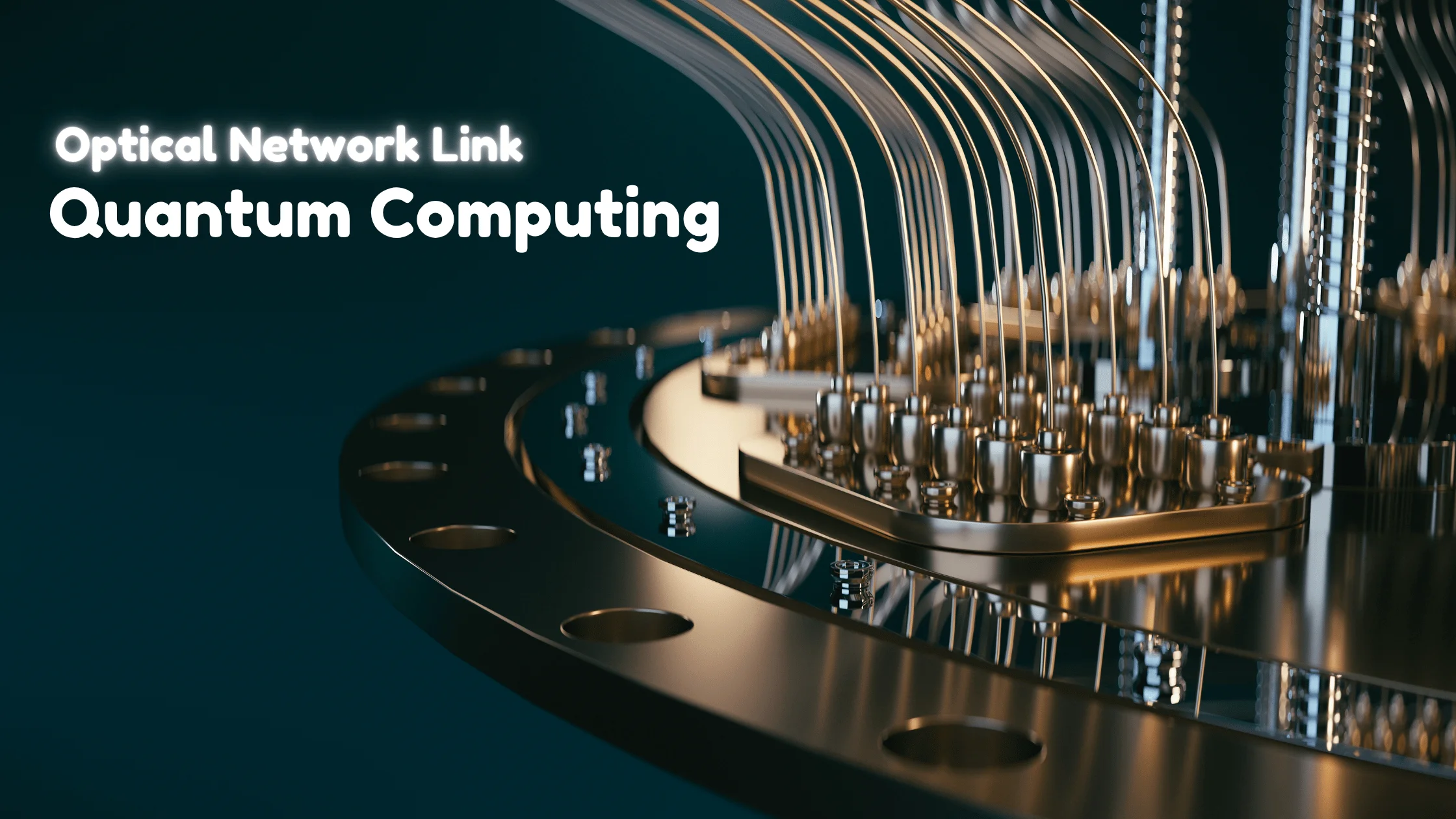Distributed Quantum Computing Across an Optical Network Link: Future of Quantum Communication
Published: 20 Jun 2025
The world of computation is being transformed by quantum computing, which allows intricate problem-solving that is impossible with classical computers.

When using distributed quantum computing, interconnected quantum processors work together as a single, powerful unit, much like the large, ensemble-based quantum computers that we know today.
Linking the individual processors in such an ensemble poses certain challenges that we will explore in this article.
We will also go over the optical means that promise to overcome those challenges, using light, the easiest and fastest way to deliver both classical and quantum signals over moderate distances, to connect the processors to each other and to the classical computers that serve as their control units.
Understanding Distributed Quantum Computing
In contrast to classical distributed computing, where intertwined classical nodes share assignments, distributed quantum computing comprises quantum processors that swap quantum states. The main benefits are:
- Quantum entanglement permits instant correlation between remote quantum systems.
- Scalability: Permits the growth of quantum networks beyond just one quantum processor.
- Error Correction: Decoherence effects and computational reliability can be improved by distributed quantum algorithms.
Optical Networks: A Quantum Link
Networks that use optical fibers, which were once thought to be purely for classical communication, are now being adapted in some very interesting ways to serve the needs of quantum computing. At the core of these adaptations lies the concept of using light itself, in the form of photons, to carry the information needed for the operation of a quantum computer.
A fundamental issue in connecting the various parts of a quantum computer, when those parts are spread out over long distances, is how to send signals from part to part without losing the, in principle, very fragile quantum states. And so far, using photons seems to represent the best option we have.
- Distribution of Quantum Entanglement: Pairs of entangled photons enable distant processors to exchange entangled states.
- Teleportation of a quantum state: This is a process that takes a state of a quantum system (like an atom) and transfers it to another identical quantum system located far away. One cannot use classical channels alone to achieve this teleportation, and using channels that are purely quantum (like a quantum computer) does not suffice either. What is needed is a combination of classical and quantum channels.
- Repeater for Quantum Communications: Maintain quantum coherence over long distances to extend the range of communication.
- Quantum Repeaters: Make quantum communication practical over long distances.
Challenges and Solutions
Although it holds great potential, combining quantum computing with optical networks poses some problems.
- Photon loss: The optical fibers have a transmission loss that limits the fidelity of the quantum information.
- Solution: Quantum repeaters and fault-tolerant error-correction protocols.
- Synchronization Problems: All processors must be in a consistent quantum state.
- Solution: Use precise techniques to synchronize quantum clocks.
- Limitations of hardware: Developing stable quantum processors that work with optical links.
- Remedy: Achieve advancements with superconducting qubits and photonic quantum processors.
Real-World Applications
Optical networks enable many possibilities for performing distributed quantum computations.
- Quantum Secure Communication: Using quantum key distribution to achieve unbreakable encryption.
- Quantum computing in the cloud: Optical networking spreads access across the globe to quantum processors.
- Artificial Intelligence and Quantum Computing: Utilizing quantum algorithms to resolve intricate issues linked to optimization and machine learning.
Conclusion
A major development in not-too-distant practical large-scale quantum computing is distributed quantum computing over optical networks. It could make computation tasks solvable in a reasonable time using qubits instead of classical bits. Technical challenges remain, however, in both network and computing node technology. If these issues can be solved, a largely optical quantum internet could be implemented with the network directly interfacing with computing nodes.

- Be Respectful
- Stay Relevant
- Stay Positive
- True Feedback
- Encourage Discussion
- Avoid Spamming
- No Fake News
- Don't Copy-Paste
- No Personal Attacks

- Be Respectful
- Stay Relevant
- Stay Positive
- True Feedback
- Encourage Discussion
- Avoid Spamming
- No Fake News
- Don't Copy-Paste
- No Personal Attacks





